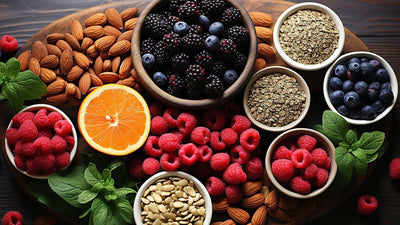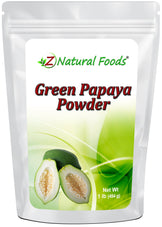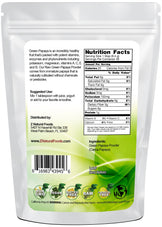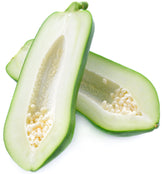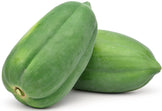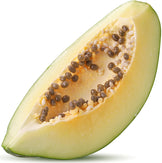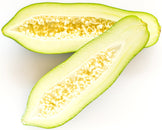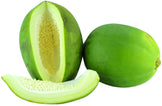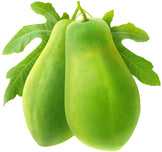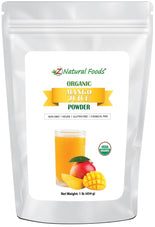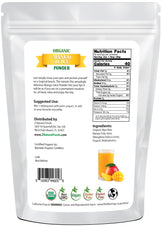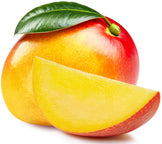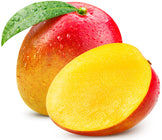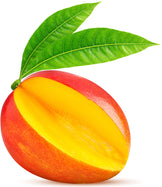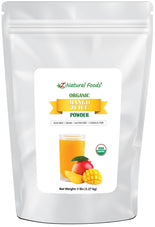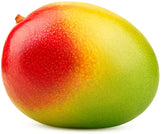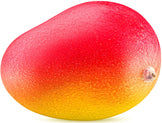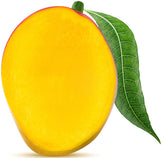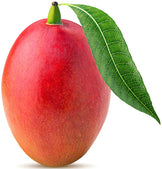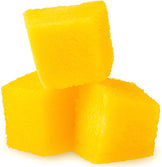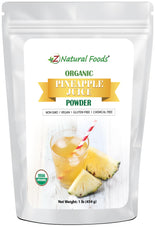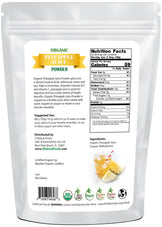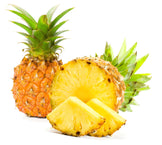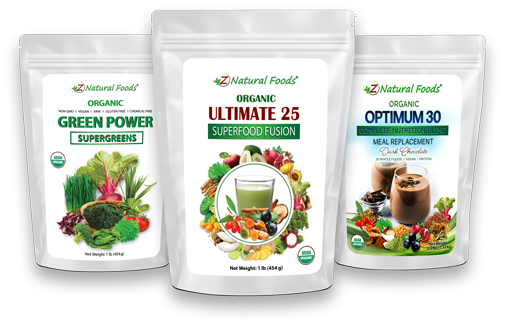Description
Description
In this helpful article about the incredible Green Papaya, we review many of the most frequently asked questions we receive regularly.
As we answer the FAQs, let’s first give this topic of unripe fruits a little framework.
You see, we are all creatures of habits – often based on what we have been taught in our culture and family.
In the Western world, we are led to believe that any visible imperfections on the fruits render them not the top pick or perhaps even inedible.
We are essentially taught to eat only the most perfect-looking ripe produce with a bright and vibrant exterior to ensure the most delightful flavor. When you go to the grocery store looking for papayas, you will often find a fruit with a bright yellow exterior ready to eat when it is slightly soft to the touch.
This ripened fruit is a nourishing source of vitamins, minerals, phytonutrients, and a tremendous source of the enzyme papain.
All fruits go through different stages of development.
Each stage brings unique changes to flavor, texture, nutritional quality, and culinary uses. What seems strange to one culture regarding when and how a specific food is eaten or prepared may be a long-standing tradition to another.
You may be surprised to learn that many unripened fruits provide a unique profile of compounds that you may not find in the ripened version.
Papaya is an excellent example of all the fantastic qualities it takes on through the different stages of development.
Let’s now answer our first question.
Frequently Asked Questions about unripe Green Papaya
Q. What is Green Papaya?
Essentially, green papaya is the unripened version.
But, discussing papaya's different stages is vital to answer this question thoroughly.
Understanding these different stages is important because it is typically believed that a perfectly ripened papaya contains the most condensed levels of a wide range of nourishing compounds and enzymes that may support digestion and a healthy inflammation response.
Although, with papaya, this is not the case. There are four primary stages of papaya maturity, all based on the fruit's exterior color and firmness:
- Stage 0: Entirely green
- Stage 1: Yellow that covers up to 15% of the skin surface
- Stage 2: Yellow that covers up to 25% of the skin’s surface
- Stage 3: Yellow that covers 50% of the skin’s surface
As a climacteric fruit, the fast ripening of papaya is triggered by ethylene biosynthesis; Ethylene is a gaseous plant hormone that plays a role in the fruit ripening process.
As the fruit matures, it is produced as a signal to induce fruit ripening.
An excellent example of this process is when you put a banana or avocado in a paper bag to quicken the ripening process. Green papaya has a crisp white flesh with very little flavor but a spectacular crunch. Many culinary experts characterize it as having a “clean” taste, like a cucumber or jicama, and the seeds have a slightly peppery flavor.
Green papaya is well known to contain nourishing amounts of powerful enzymes that are typically extracted from a milky substance called papaya latex. It has been discovered that there are five enzymes in papaya latex;
- Papain: A protein-digesting enzyme (Protease)
- Chymopapain: A proteolytic enzyme clinically used in the treatment of bulging discs
- Caricain: An enzyme specific to breaking down gluten.
- Glycyl Endopeptidase: A cysteine endopeptidase in the papain family. The purpose of cysteine is to change the catalytic(increase the speed of a reaction) property of an enzyme.
- Glutamine Cyclotransferase: A conversion enzyme
While present in ripened papaya, these enzymes are much more concentrated in unripened green papaya.
Each enzyme varies in structure and potency, which may lead to potential benefits (like tissue protection and breaking down protein); four of the five enzymes are called proteolytic enzymes or proteases.
Perhaps the most well-known protease enzyme in papaya is papain.
A protease's primary job is to break down proteins that are either dead or damaged and remove these damaged protein bonds. When consumed with food, they break down protein from your food into amino acids allowing for proper integration into the bloodstream for a wide range of uses. Proteases can be absorbed into the bloodstream when consumed without food, clearing out damaged or dead protein.
In a review discussing preliminary in vitro research, papaya latex has been shown to possibly support the body's ability to extract specific forms of parasites. It was stated that the latex and purified papain demonstrated potential activity against S. venezuelensis eggs and larvae. Another study concluded that papain and chymopapain found in papaya latex demonstrated anthelmintic potential, leading to the potential destruction of parasitic worms.
A paper titled Papain, a Plant Enzyme of Biological Importance: A Review discusses significant findings about papain's mechanisms of action, potential medicinal uses, and potential for drug design and preparation.
Q. Is there a difference between green papaya and unripe papaya?
There is no difference; they are the same thing.
Q. What is green papaya powder good for?
While there is little clinical evidence that discusses the link between consuming green unripened papaya and its specific benefits, preliminary research is slowly building.
To be transparent, various compounds like protease enzymes (discussed above) have significant clinical evidence of possibly supporting healthy digestion and a healthy inflammation response, along with a slew of other potential benefits; almost all of those studies are on the isolated compounds present in green papaya and not looking at how they work in conjunction with all the other nourishing compounds found in green papaya.
For example, in a study discussing the effects of protease enzyme supplements on skeletal function after downhill running, the following statement was made specific to their impact.
“The experimental group demonstrated superior recovery of contractile function and diminished effects of delayed-onset muscle soreness after downhill running when compared with the placebo group.”
It was concluded that protease supplements might support muscle soreness and facilitate muscle healing.
A controlled study comparing the effect of an enzyme combination and acyclovir on pain and skin lesions stated that the enzyme preparation showed equal efficacy regarding specific symptom relief.
Therefore, discussing the true benefit of unripe green papaya may be premature. We do know that traditional anecdotal evidence supports many of its purposes as a “traditional remedy.”
Q. Is unripe papaya better then ripe papaya?
To answer this question correctly, it is essential to define what is meant by the term “better” and what we are referring to when we use it.
Better is defined as (specifically when referring to food) something of tremendous or higher versatility and nourishing qualities. In this case, when we speak of better, this is running parallel to potentially defining what is healthier. Every culture defines how and why an individual food is considered “healthy” based on various factors.
According to Western medicine, healthy food is a substance that provides the nourishment needed to sustain well-being and retain energy.
Traditional Chinese Medicine looks at food from a slightly different perspective. According to TCM, food is not defined as healthy or unhealthy but, instead, if it is the right food for an individual at a specific time.
According to Traditional Chinese Medicine (TCM), all foods have energy. TCM teaches us that foods have Yin/ Yang energy, five temperatures, five flavors, and four directions. In these principles, Yin and Yang's action is the general property, and temperature is the extremeness of the properties.
In simple terms, Yin is cooling, builds blood, and has downward moving energy. Yang is warming, energizing, and has upward-moving energy.
TCM also believes that it is best to eat most foods cooked and warm during the cold months of winter for better digestion and utilization and to keep you warm and well-nourished.
In the warm summer months, when people are out and moving around, TCM generally looks at lighter, more cooling diets with more fresh produce as naturally healthy.
Therefore, because both versions of papaya have unique nourishing qualities, the answer is better based on your individual needs, culinary use, and cultural upbringing.
In conclusion, green papaya has a well-established background based on tradition in various cultures, and a growing body of evidence supporting (what, up to this point) was considered anecdotal evidence to shine a light and bring a better understanding surrounding the complexities of this uniquely outstanding food.
As time marches on, we hope to see more vital information surrounding this fundamental food.
For more information about our Green Papaya Powder (unripe), go here:
For more information about our Organic Papaya Juice Powder, go here:
To review all of our Juice Powders, go here:


